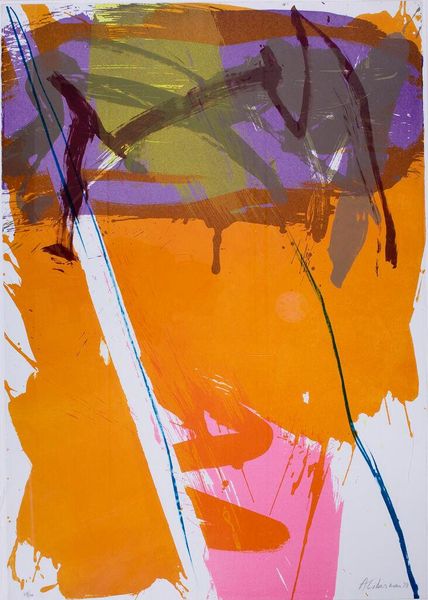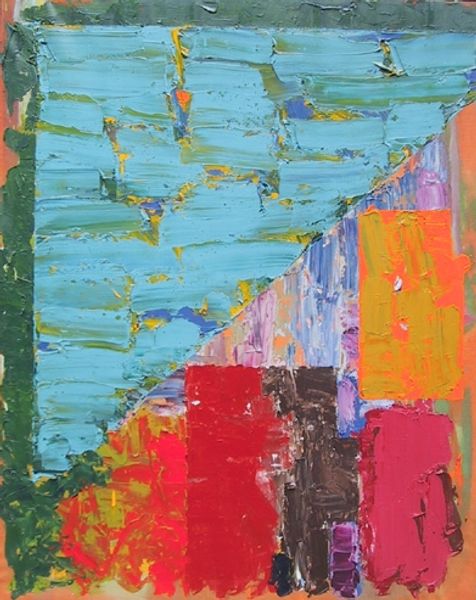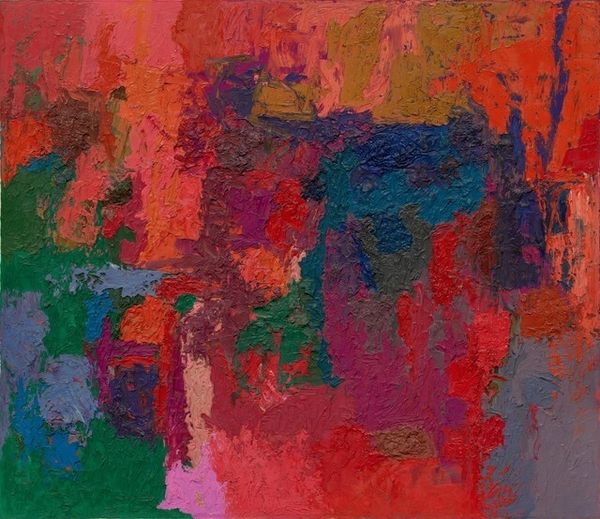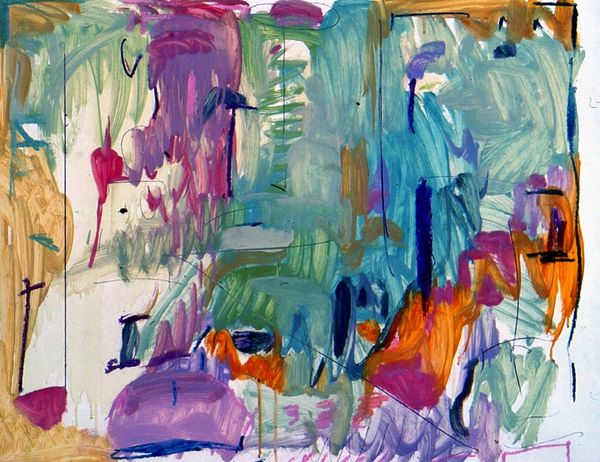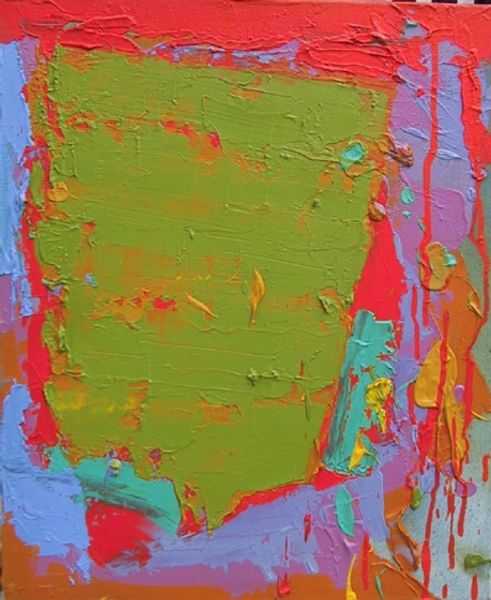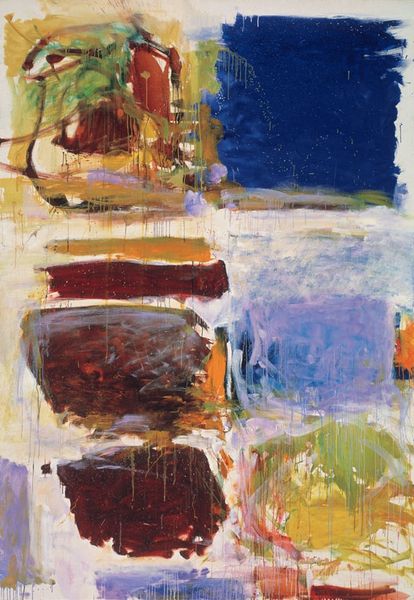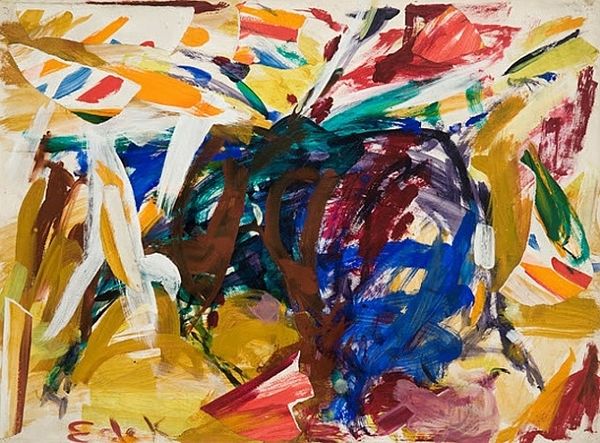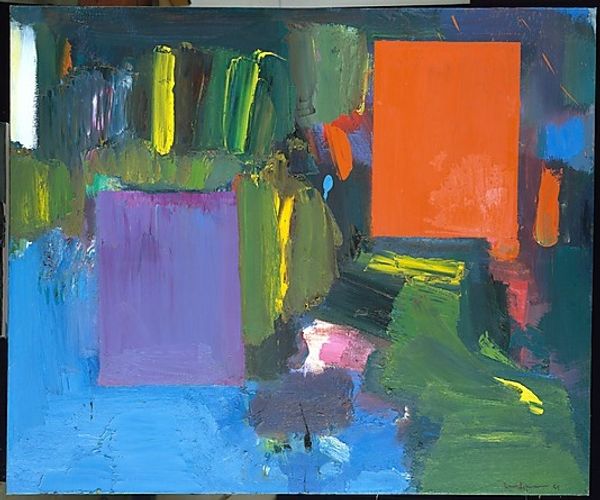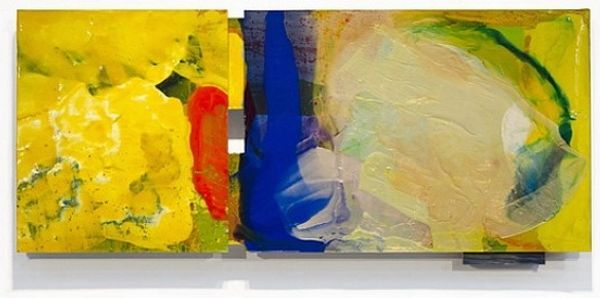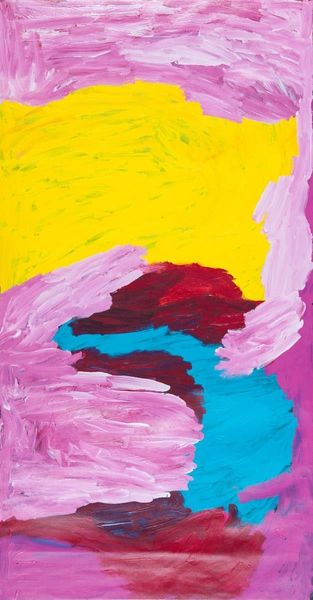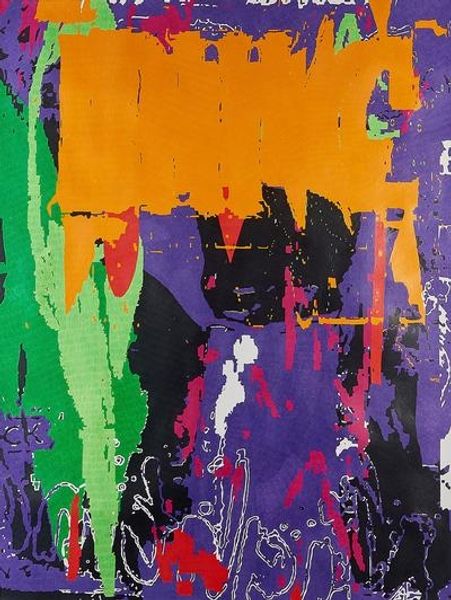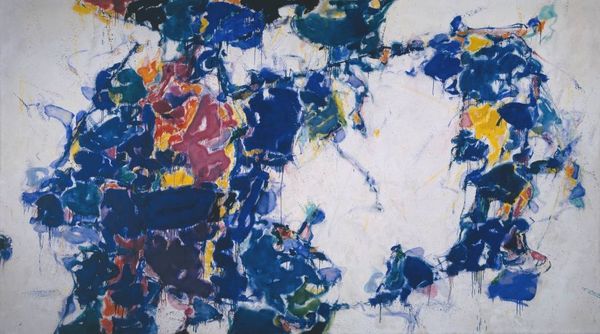
acrylic-paint, gestural-painting, impasto
#
abstract-expressionism
#
abstract expressionism
#
abstract painting
#
acrylic-paint
#
gestural-painting
#
impasto
#
abstraction
#
line
Copyright: Franz Kline,Fair Use
Editor: We’re looking at an “Untitled” acrylic painting by Franz Kline from 1957. I'm immediately struck by the bold, almost aggressive brushstrokes. It feels chaotic but also strangely controlled. What are your initial thoughts, and how do you interpret this work within the context of its time? Curator: The aggressive brushstrokes you mention are very telling. Kline was working in the heyday of Abstract Expressionism, a movement deeply intertwined with Cold War anxieties. His large, stark works can be seen as a reaction against the perceived rigidity of the establishment and the pervasive fear of annihilation. Consider the lack of a central image. Doesn’t this reflect a kind of existential unease prevalent at the time? Editor: I can see that. The absence of recognizable forms definitely contributes to the unsettling feeling. So, is this chaotic style almost a form of protest against societal norms and pressures? Curator: Precisely. And consider the performative aspect. The act of painting itself, the gestural energy captured on the canvas, becomes a statement. Abstract Expressionism moved painting away from merely representing things and towards being an event. The institutions that began to embrace it - museums and galleries - thus legitimized a very raw and, in its early days, very rebellious mode of expression. Do you think that act of legitimization changed its initial impetus? Editor: That's a great point. I suppose once the establishment embraces something rebellious, some of its edge is inevitably dulled. Maybe that acceptance is what paved the way for later movements to push even further. Curator: Exactly. We can’t forget that the art world itself, the galleries and the collectors, helped shape Abstract Expressionism’s legacy, sometimes reinforcing certain narratives and downplaying others. It really invites us to think about how the reception of art is shaped by cultural and socio-political circumstances. Editor: This has given me a whole new way to view abstract expressionism and think of how artworks become integrated, and changed by culture! Curator: It's always worthwhile considering the environment and power dynamics around art objects; that informs our understanding just as much as brushstroke or pigment.
Comments
No comments
Be the first to comment and join the conversation on the ultimate creative platform.

